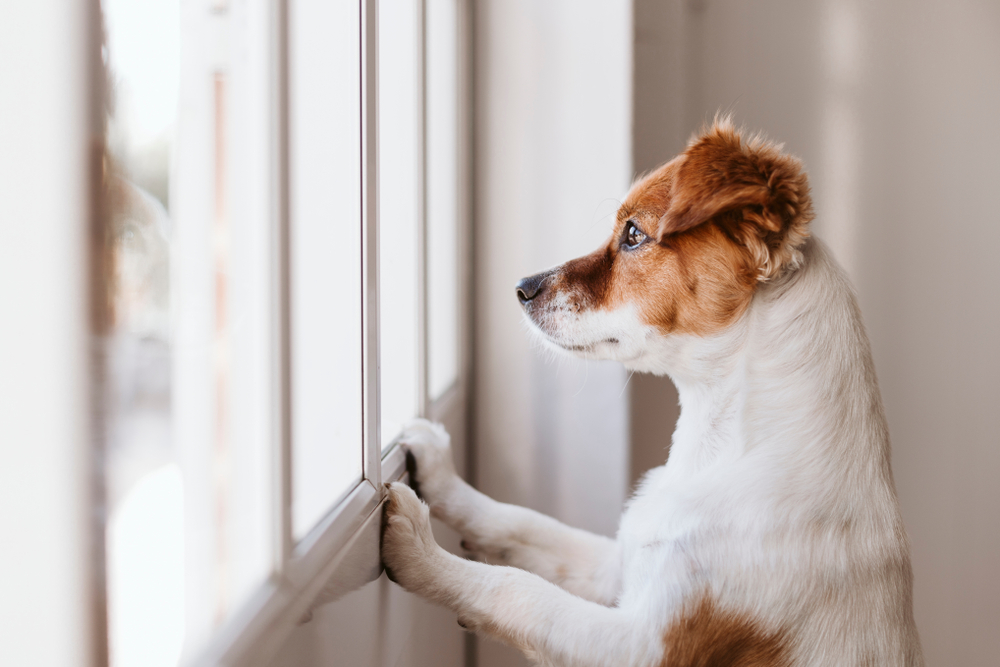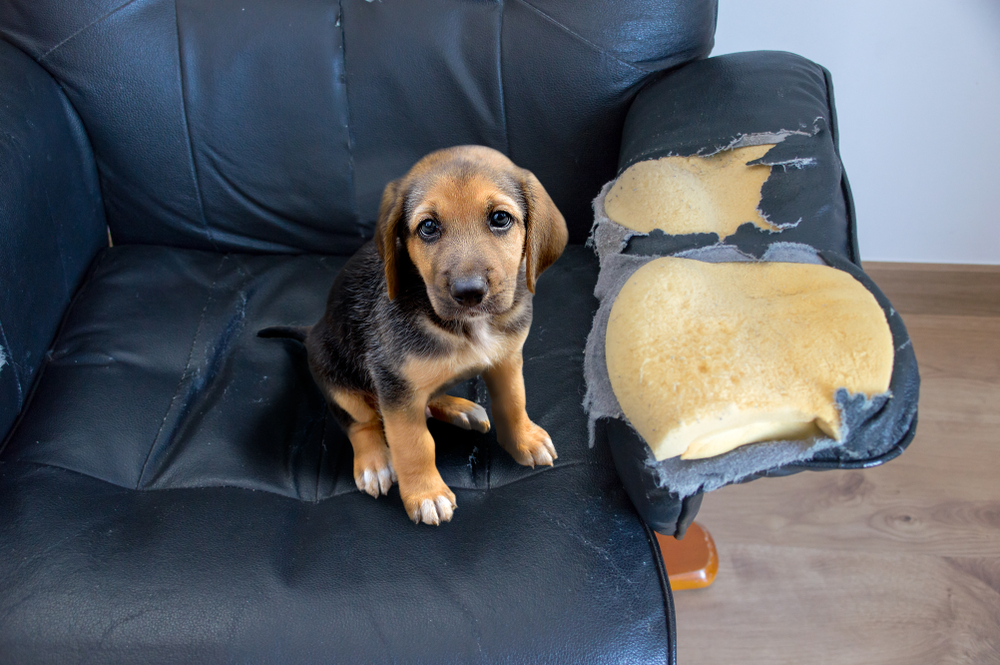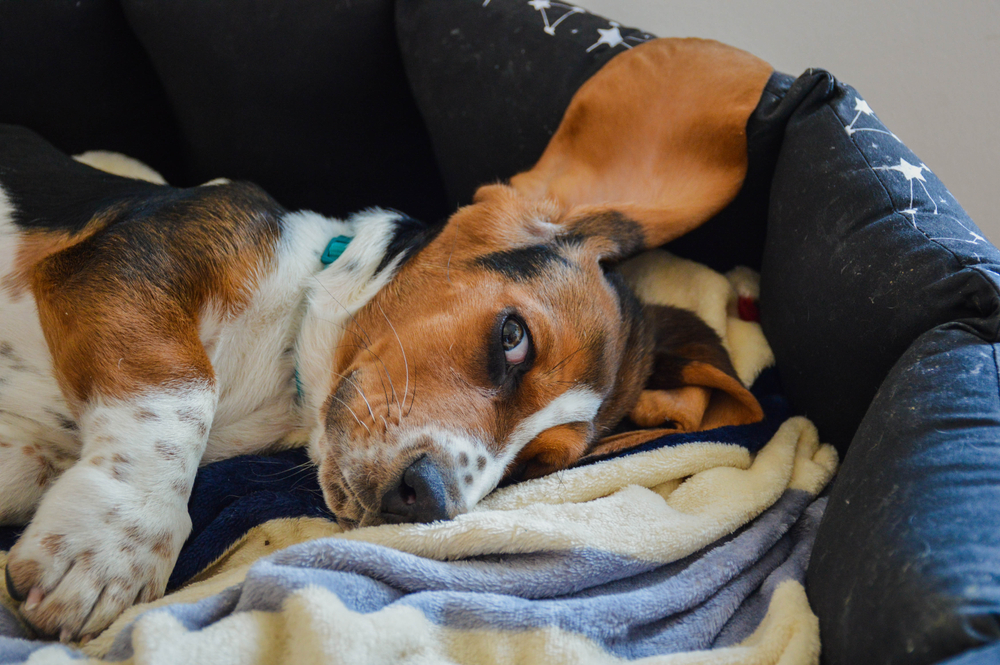Puppies often view their owners as the centre of their world, relying on them for comfort, companionship, and a sense of safety. When those they trust walk away, even for a few moments, the sudden absence can feel like the loss of their entire support network. As tiny beings still discovering the rhythms of life, young dogs can be overwhelmed by uncertainty, making any departure a catalyst for stress.
The transition from constant human presence to solitude can trigger an intense emotional response. Without clear signals that separations are temporary, puppies may interpret your leaving as abandonment, prompting worry-driven behaviours that can disrupt both their development and your home environment. By exploring the root causes of this distress and applying thoughtful, consistent strategies, such as puppy training in Sydney, you can guide your puppy towards calm independence and rebuild their sense of security.

Why Puppies Develop Separation Anxiety
Puppies depend on their carers for warmth, security, and social interaction as they navigate a world of new sights and sounds. When routine absences occur without preparation, their natural insecurity can turn into strong emotional distress.
Natural attachment to owners in early development
Puppies are biologically programmed to seek out their primary carers for safety and nourishment during the first twelve weeks of life. This period builds neural connections that underpin trust and reliance on familiar faces.
- Young dogs instinctively track the movements of anyone who regularly feeds and comforts them, creating a deep emotional link that fuels distress when those figures disappear. Their brains release stress hormones if they cannot locate their carer quickly.
- Early separation from littermates teaches them to associate comfort with human carers rather than canine company, which can magnify their reaction when humans depart. The lack of a canine peer support network intensifies their sense of vulnerability.
- Forming strong attachments at a very young age safeguards survival in nature, but in the home environment it can lead to distress when humans leave without warning. Their instinctive drive to stay close to their keeper overrides self-soothing mechanisms.
Lack of gradual independence training
Puppies need guided lessons in coping with brief absences before facing longer separations. Without controlled practice, sudden departures can trigger panic and fear.
- Missing step-by-step exposure to alone time means puppies never learn that you will return after leaving, leaving them convinced that each separation is permanent. They lack the memory reassurance that humans come back.
- Skipping short practice sessions forces them straight into lengthy alone spells without the mental toolkit to manage stress, creating a cycle of panic each time they are left. They cannot draw on past calm experiences to soothe themselves.
- Providing no gradual build-up to time apart keeps anxiety levels high, making departures feel unpredictable and overwhelming. Their confidence falters without a structured approach to independence.
Changes in routine or environment
Unexpected shifts in daily patterns can unsettle a puppy’s sense of security, as predictability is vital during early stages of life. Any major change can spark fear and unrest.
- Moving into a new home exposes puppies to unfamiliar scents, sounds, and spaces, making even a short absence feel dire in the midst of so much novelty. They cannot rely on known landmarks for comfort.
- Carers returning to work after a period at home introduces extended alone periods that puppies have not experienced before, causing confusion and worry. Their days suddenly lack the constant human presence they’ve grown used to.
- Altered routines, such as different feeding times or varied play schedules, disrupt the environmental cues that signal safety and can make departures feel more threatening. They interpret these changes as signs of abandonment.
Breed tendencies
Certain lineages carry genetic predispositions towards stronger social bonds and heightened sensitivity to change. Breed characteristics can influence how readily a puppy develops anxiety.
- Companion breeds that were bred to remain close to humans often exhibit more intense distress at separations, reflecting generations of selective traits favouring loyalty and constant company. Their very nature can make independence training more challenging.
- Working or independent breeds may show lower levels of separation worry, as they historically spent long periods performing tasks away from human supervision without panic. Their instincts support solo activity.
- Pups from highly sensitive or reactive breeds may display exaggerated responses to departures, including vocal protests and frantic searching, due to their heightened perception of threat. Genetic wiring amplifies their stress reactions.

Signs Your Puppy Has Separation Anxiety
Spotting the warnings of separation anxiety early allows you to adjust your approach before stress behaviours become routine. Recognising these signs ensures timely support.
Whining, barking, or howling when left alone
Puppies often vocalise distress in hopes of drawing attention and keeping their carers close. Persistent noise can signal that leaving is overwhelming.
- High-pitched whining or continuous barking reflects a puppy’s desperate attempt to call you back, as they view your exit as a crisis. Their vocal reaction escalates if unaddressed.
- Howling can carry over long distances and form a feedback loop of panic, where each sound amplifies their fear. Their sense of isolation spirals with every echo.
- Vocal outbursts usually begin soon after departure and intensify the longer the puppy remains alone, indicating a strong emotional turmoil rather than boredom. It is a clear distress marker.
Destructive behaviour
Stress often triggers physical outbursts as puppies try to manage their anxiety and cope with being alone. Chewing and scratching are not signs of disobedience but natural responses to emotional distress.
- Puppies may tear apart cushions or shoes in a bid to self-soothe and channel nervous energy into a tangible task. Chewing releases tension but damages property.
- Scratching at doors or walls serves as an instinctive method to break free and reunite with their carers, reflecting a fight-or-flight urge triggered by fear. The frantic activity shows their desperation.
- Repeat episodes of damage indicate a persistent anxiety issue rather than a one-off lapse in discipline, pointing to emotional distress rather than mere mischief.
Pacing or excessive drooling
Repetitive pacing back and forth in a confined space signals unrelieved anxiety, as does drooling beyond mealtime. These physical signs confirm inner turmoil.
- Rhythmic pacing along a fence line or room perimeter shows a puppy’s inability to settle and self-comfort when alone. Their brains remain in a heightened arousal state.
- Excessive drooling, often accompanied by panting, points to stress-induced overproduction of saliva, highlighting a physiological response to fear. It surpasses normal anticipation at mealtimes.
- Observation of these behaviours during absence, rather than play or exercise, confirms that anxiety is the root cause and not a need for activity stimulation.
Toileting accidents only when alone
A housetrained puppy reverting to indoor toileting during separations indicates emotional upset rather than a lapse in training. Stress can overwhelm bladder control.
- Anxiety can override commands and housetraining, causing puppies to soil their environment as a nervous response. Their physiological stress reaction interferes with normal control.
- These accidents often occur shortly after departure, linking the timing directly to separation triggers rather than random incidents. The correlation is clear.
- Repeated episodes despite a strong training history signal that emotional distress has overtaken learned routines, demanding intervention.
Attempts to escape confined spaces
Trying to flee pens, crates, or rooms underscores a puppy’s urgency to reunite with their carer. Escape attempts result from panic rather than curiosity.
- Pups may chew through crate bars or slip under gates in hopes of finding their owner, risking injury in the process. Their will to escape shows extreme discomfort.
- These behaviours often peak during the early minutes of separation, when stress hormones surge most intensely. Their flight instinct overrides caution.
- Frequent escape incidents suggest a deep-rooted fear of isolation and necessitate revisiting their environment and training plan.

How to Help Your Puppy Feel Calm and Secure
Introducing supportive strategies can transform a puppy’s experience of separation from traumatic to manageable. Small steps build lasting confidence.
Gradual desensitisation
By carefully pacing time apart, puppies learn that departures are temporary and safe. Slow progression allows positive memories of alone time to accumulate.
- Begin with absences of just a few seconds while remaining nearby, gradually extending intervals as the puppy stays calm. This steady exposure builds trust in the routine.
- Reward the puppy upon each return to create an association between being alone and positive outcomes, reinforcing healthy emotional responses. Treats and gentle praise strengthen their confidence.
- Track progress and adjust timing based on your puppy’s reactions, ensuring that each step remains within their comfort zone. Patience prevents setbacks.
Create a safe space
A designated zone filled with known textures and scents can become a comforting refuge when you are gone. Consistency and familiarity ease anxiety.
- Line the space with blankets that carry your scent and provide chew toys to divert nervous energy into satisfying activities. Familiar smells help soothe distress.
- Position the area away from busy household zones to minimise startling noises, giving the puppy a quiet retreat to rest without interruption. A calm setting encourages relaxation.
- Introduce the space gradually by spending time there together, making it a source of comfort rather than confinement. Positive association overrides initial reluctance.
Use calming cues
Sensory comforts can distract and reassure a worried puppy when you aren’t present. Multi-sensory approaches tap into natural soothing mechanisms.
- Playing gentle classical music or specialised animal relaxation tracks can mask abrupt sounds and create a predictable audio backdrop. Consistent rhythms help lower stress levels.
- Leaving an item of clothing you’ve worn provides a familiar smell that comforts puppies who rely on scent cues for security. Your odour serves as an emotional anchor.
- Interactive toys that slowly release treats on movement engage the puppy’s focus and reward independent play, reducing concentration on your absence. Stimulating puzzles channel energy positively.
Don’t make a fuss when leaving or returning
Avoiding dramatic exits and arrivals prevents heightening your puppy’s emotional rollercoaster. Understated interactions teach that departures are normal and unremarkable.
- Walk out without extended goodbyes and greet calmly upon return, preventing the puppy from associating these routines with extreme joy or fear. Neutral behaviour sets balanced expectations.
- Reward calm demeanour with gentle praise rather than exuberant praise that could amplify anxiety around your movements. Consistency in tone maintains equilibrium.
- Practice brief departures during the day without any fanfare, turning each exit into an ordinary occurrence the puppy can learn to accept. Repetition breeds familiarity.
Train for independence
Encouraging short periods of solitude, even when you are nearby, builds essential self-reliance. Mastering calm alone time inside presence transfers to success when you actually leave.
- Use a barrier such as a baby gate to separate the puppy in a living area while remaining visible, increasing complexity only when they rest quietly. Visual access eases early independence trials.
- Incorporate relaxation signals like a mat or bed command to train the puppy to lie down and settle on cue, reinforcing self-soothing behaviours. Command-based calmness becomes their default state.
- Gradually reduce your visibility and proximity as the puppy masters settle, allowing them to learn that comfort comes from within rather than your immediate presence. Autonomy skills strengthen resilience.
Supporting your puppy through moments of solitude lays the groundwork for a lifetime of confidence and emotional resilience. By recognising the natural attachments they form, spotting early signs of distress, and employing gradual, positive training methods, you can transform departures into manageable experiences. Over time, your puppy will learn that alone time need not be frightening but can instead be an opportunity to rest and enjoy their own company.
Consistency in your routines, from low-key comings and goings to structured desensitisation exercises, reinforces the message that you will always return. Coupled with a cosy, familiar safe space and calming sensory cues, these efforts empower your puppy to handle separations with composure. In nurturing their independence today, you’re gifting both of you a future filled with trust, security, and peaceful moments apart.


